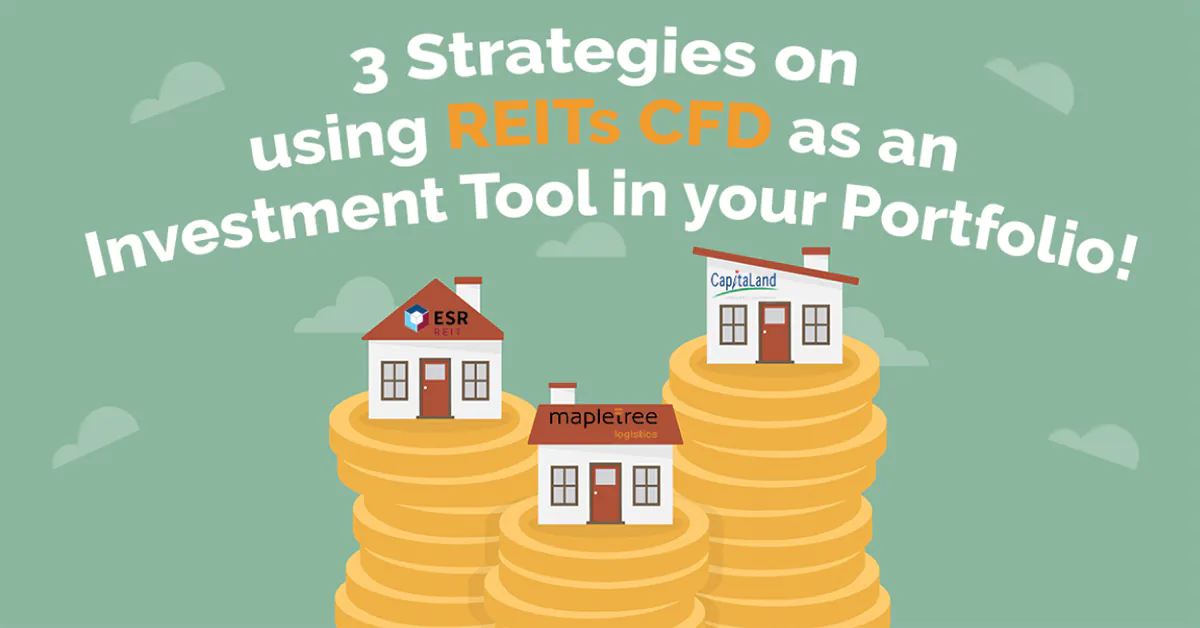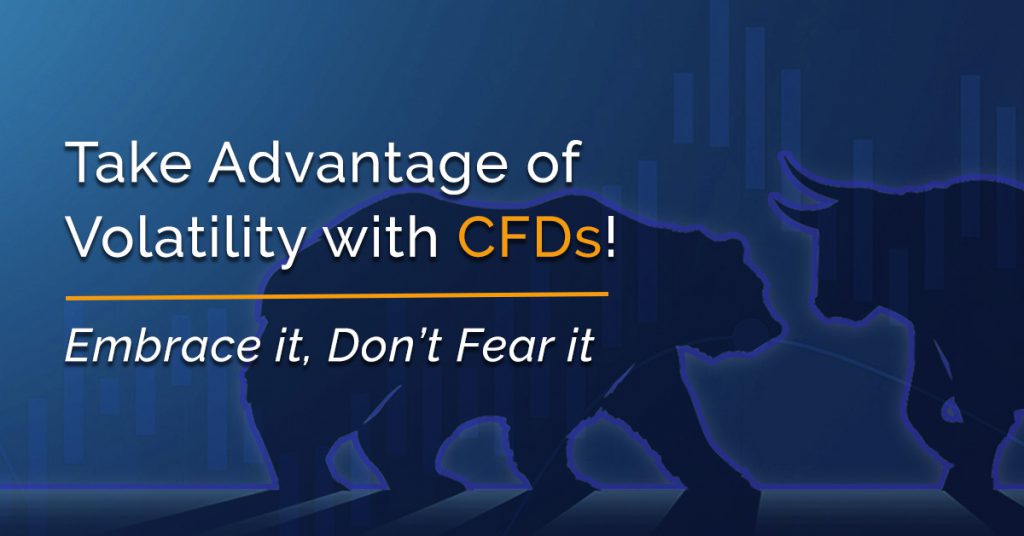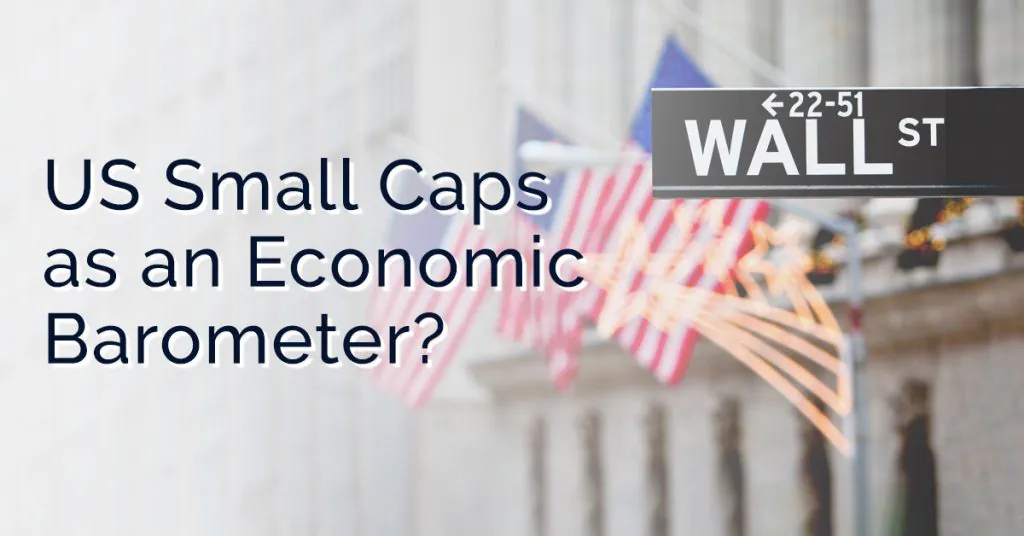3 Strategies on using REITs CFD as an Investment Tool in your Portfolio!

Published On: 5 April 2021 | 12:00 PM
Tan Kean Soon, CFD Dealer
Kean Soon graduated from the National University of Singapore with a Bachelor’s degree in Materials Engineering. He is a passionate CFD dealer who believes that equity markets can help grow one’s wealth with the right mindset, risk management and investing discipline.
In his free time, he enjoys educating himself on long-term investments and short-term trading as well as keeping up with the latest market news.
What this report is about:
- REITs own, operate and manage income-generating real estate such as serviced apartments, offices, hotels, retail malls, medical facilities, business parks, warehouses and data centres.
- You can invest in REITs by purchasing their shares directly on the stock exchange or trade REITs with CFDs, using both short-term (opportunistic short-term trading and hedging) and long-term (carry trade) strategies.
- REIT CFDs allow you to participate in the REITs’ price movements without actually owning units in the REITs.
- POEMS also offers multiple advanced order types to cater to your varied CFD trading needs and manage your transaction risks.
What is a REIT?
Real estate investment trust (REIT) is a collective investment scheme, where the funds of individual investors are pooled together to invest predominantly in real estate and real-estate-related assets such as serviced apartments, offices, hotels, retail malls, medical facilities, business parks, warehouses and data centres.
When you invest in a REIT, you’re investing in the properties managed by that REIT. You become a part-owner of those shopping malls, business parks or whatever your REIT manages. These assets are professionally managed and rental income generated is distributed to you as a REIT unit holder, after accounting for fees such as REIT-management and property-management fees.
REITs are popular with investors as they provide a steady stream of dividend income. This is because in order for REITs to enjoy tax transparency, which means their income is not taxed, they must distribute at least 90% of their taxable income to unit holders. Investors typically receive the dividend income quarterly or half-yearly [a].
Other advantages of investing in REITs include access to the underlying real estate that the REITs invest in. These assets might otherwise be inaccessible or unaffordable to individual investors. Owning certain properties directly might not be practical for most due to their high capital and/or maintenance costs. Investing in REITs is more affordable.
Finally, REITs’ generally low correlation with the other asset classes makes them excellent for portfolio diversification [b]. This can help to reduce investors’ portfolio risks and potentially increase their returns.
Types of REIT
REITs can be categorised according to the type of real estate they own and/or manage. There are currently 31 REITs listed on the Singapore Exchange (SGX), investing in commercial/office, industrial, healthcare, hospitality, retail and other assets [c].
Different REITs have different degrees of sensitivity to economic risks, depending on the type of tenants occupying the real estate. During a market downturn, REITs that are much more sensitive to such risks may resort to reducing their dividend payouts.

How do you trade REITs with CFDs?
Investors typically invest in REITs for the long term as they are primarily aiming for steady streams of dividend income. To invest in a REIT, you can purchase the REIT’s shares directly on the stock exchange.
Alternatively, you may take a position on a REIT’s share price by using derivative products such as contracts for differences (CFDs). With CFDs, you can participate in the REIT’s market movements without actually owning units in the REIT. CFDs allow you to profit from the REIT’s rising share price (long CFDs) as well as falling share price (short CFDs).
When you trade CFDs, you are entering into an agreement with Phillip Securities to settle the price difference from the time when you initiate your trading position to the time you close your position.
Below are some of the strategies you may use to trade CFDs:
1) Short term strategy – Opportunistic Short-Term Trading
Although REITs are generally perceived as longer-term investment vehicles, short-term volatility exists as a result of political, social and economic events. This means that there are short-term trading opportunities you can take advantage of.
1) Long REITs CFDS
When you buy REIT CFDs (long), only a portion of the full investment capital is required to start your trade. This is known as the required margin.
In the illustration above, you will earn a 2% gross profit* when your REIT’s share price appreciates by 2%. With CFD trading, your gross ROI can be magnified to 20% because you only need to commit 10% of the total investment capital upfront to gain full exposure to price movements.
*Excluding commissions and finance charges
2) Short REITs CFDS
When it comes to shorting, CFDs offer more flexibility as you can hold CFD short positions for a longer period of time whereas when you short REIT or any other shares, you need to buy back the shares within the same day.
In addition, only a fraction of the full investment capital is needed to initiate a REIT CFD’s short position.
To short a REIT CFD, you may sell your REIT CFD contract directly without holding any long position.

* The second illustration above did not include commission, finance charge and all other charges incurred. The actual ROI will be lower than Gross ROI.
In the illustration above, your gross ROI is magnified by 20% through shorting a CFD when the REIT’s share price falls by 2%.
This strategy is suitable for those with a higher risk appetite who aim to take advantage of short-term market movements. This is because CFDs can magnify losses if the price moves in the opposite direction.
2) Short term strategy – Hedge REIT portfolio
Investors who currently hold a large basket of REITs as long-term investments may find it difficult and troublesome to liquidate them altogether during a market downturn and buy all back at one go when the market recovers.
In this case, they may want to use CFDs as a hedging instrument to manage their REIT portfolio’s short-term downside risks.
They may hold CFDs in a direction opposite to their REIT shares. For example, if they already have a long position on REIT X’s shares, they may hold a short position on REIT X’s CFD to manage REIT X’s share-price downside risks.
* The illustration above does not include commissions, finance charges and all other fees incurred. Actual gross profit and loss (PnL) will differ from the illustration.
In the above example, when a REIT’s share price drops by 2%, the losses in your stock portfolio are cushioned by gains in your CFD (short position). This results in a zero net loss for your portfolio.
3) Long term strategy – Carry Trade
Unlike other financial derivative products, you are entitled to dividends when you hold long CFD positions, even though you do not actually own the REIT shares.
There is yet another trading strategy where you can potentially increase your dividend income further with leverage.
This is known as the “carry trade”. It involves borrowing at a lower interest rate to invest in assets that can generate a higher rate of return.
* The illustration above does not take into account price movements and changes in dividend per share.
In the illustration, an S-REIT CFD is used to generate passive income through a carry trade. Initially, you purchase and hold the S-REIT’s CFD contract (long) worth S$150,000 with a S$15,000 margin upfront and dividend yield of 5.5%. You hold the contract for the next five years. If there is no change in the REIT’s share price and dividend per share, your net return is S$7,294.56. This represents a 49% return over the 5-year period.
Please note that there are risks associated with the carry trade:
- Share-price volatility. Your losses will be magnified if the REIT’s share price moves against you. So, it is crucial to use leverage responsibly and cut losses quickly.
- Decrease in dividend yields on cost. This happens when the REIT cuts its dividend payouts which reduces your dividend income.
- Increase in CFD financing charges. Any increase in borrowing costs would further reduce your dividend income.
Conclusion
To conclude, REITs offer investors the benefits of real-estate investment along with the ease of stock trading.
REITs are popular with investors as they provide a steady stream of dividend income and are excellent vehicles for portfolio diversification. One can invest in REITs by purchasing their shares directly or trade REITs with CFDs, using both short-term (opportunistic short-term trading and hedging) and long-term (carry trade) strategies.
How to start trading REITS using POEMS Platforms
Ready to add REITs into your portfolio? Firstly, to begin your journey in trading CFD, you are first required to open a CFD account with us.
Kindly click here for more information on opening a new CFD account.
If you already have a POEMS account, here are the few simple steps you can follow to activate your CFD account:
| Platforms | Steps | Suitable for |
| POEMS 2.0 | Login > Acct Mgmt > CFD > Online Account Opening | Desktop/ Web-based trading |
| POEMS Mobile 2.0 (Download on Apple store or Google Play) | Login > Click on the menu button on the top left of the screen > “Portfolio” > “Activate CFD Trading” Link. | Smartphones applications (iOS/Android) |
| POEMS Pro (Download here) | Login > Acct Mgmt > CFD Acct Mgmt> CFD Account Opening | Desktop/ application-based trading |
As a regulatory requirement, all investors are required to complete the Customer Knowledge Assessment (CKA) to trade CFDs. The different methods to achieve a pass in CKA can be found in the CKA form.
Also, In accordance to new regulations by Monetary Authority of Singapore (MAS), all investors who wish to continue trading Contracts For Differences (CFDs) from 8 October 2019 onwards, will be required to acknowledge the Risk Fact Sheet provided by Phillip Securities Pte Ltd (PSPL) and be downloaded here.
With different platforms catered to different users, Phillip Securities offers the best for our clients. Not sure on how to start trading CFDs? Rest assured! See the below table on a simple guide to long and short CFD as well as the various order types that we provide.
| Long CFD | Short CFD |
 |
 |
| 1) To initiate a Long CFD position, you may submit a CFD “BUY” order. | 1) To initiate a Short CFD position, you may submit a CFD “SELL” order directly. |
 |
 |
| 2) To close off the Long CFD position at hand, you may submit another CFD “SELL” order with the same quantity. |
2) To close off the Short CFD position at hand, you may submit another CFD “BUY” order with the same quantity. |
CFD Advanced Order Types
We offer multiple advanced order types to cater for your sophisticated trading needs and to manage the risks on your CFD transactions.
For more information on each of these order types, please refer here.
Trade on our award-wining suite of POEMS Platform. Open a CFD Account now!
References
[a] https://blog.moneysmart.sg/invest/singapore-reits-investing/
[b] https://www.asiaone.com/money/ultimate-guide-reits-singapore-2020
[c] https://www.sgx.com/securities/securities-prices?code=reits (as of 29 Mar 2021)
[i] Fraser Centrepoint Trust FY2020 Annual Report’s Market Overview
[ii] SPH REIT FY2020 Annual Report’s Market Overview
[iii] Keppel REIT FY 2019 Annual Report’s Independent Market Review
[iv] Fraser Hospitality Trust FY2020 Annual Report’s Market Overview
[v] Far East Hospitality Trust FY2019 Annual Report’s Industry Overview
[vi] ParkwayLife REIT FY2019 Annual Report’s Market Review and Outlook
[vii] https://www2.colliers.com/en-sg/news/2019-10-13-2019-radar-report-singapore-top-locations-logistics
[viii] Keppel DC REIT FY2019 Annual Report’s Market Review
[ix] Mapletree Industrial Trust FY2019 Annual Report’s Market Overview
More Articles
The Opportunities in China's New Economy
What are the opportunities that investors could look for in the China’s new economy? Read our latest article to find out more about the China market!
Take advantage of Volatility! Embrace it, Don't Fear it!
2020 has been an eventful year which has led to spikes in market volatility. Ride on the wave of volatility and learn how you can take advantage of the volatility by trading CFDs
US Small Caps as an Economic Barometer?
Did you know that US small-cap stocks are often perceived as a reliable economic barometer of US economic activity? Read this article to learn more!
Disclaimer
This material is provided to you for general information only and does not constitute a recommendation, an offer or solicitation to buy or sell the investment product mentioned. It does not have any regard to your specific investment objectives, financial situation or any of your particular needs. Accordingly, no warranty whatsoever is given and not liability whatsoever is accepted for any loss arising whether directly or indirectly as a result of your acting based on this information.
Investments are subject to investment risks. The risk of loss in leveraged trading can be substantial. You may sustain losses in excess of your initial funds and may be called upon to deposit additional margin funds at short notice. If the required funds are not provided within the prescribed time, your positions may be liquidated. The resulting deficits in your account are subject to penalty charges. The value of investments denominated in foreign currencies may diminish or increase due to changes in the rates of exchange. You should also be aware of the commissions and finance costs involved in trading leveraged products. This product may not be suitable for clients whose investment objective is preservation of capital and/or whose risk tolerance is low. Clients are advised to understand the nature and risks involved in margin trading.
You may wish to obtain advice from a qualified financial adviser, pursuant to a separate engagement, before making a commitment to purchase any of the investment products mentioned herein. In the event that you choose not to obtain advice from a qualified financial adviser, you should assess and consider whether the investment product is suitable for you before proceeding to invest and we do not offer any advice in this regard unless mandated to do so by way of a separate engagement. You are advised to read the trading account Terms & Conditions and Risk Disclosure Statement (available online at www.poems.com.sg) before trading in this product.
Any CFD offered is not approved or endorsed by the issuer or originator of the underlying securities and the issuer or originator is not privy to the CFD contract. This advertisement has not been reviewed by the Monetary Authority of Singapore (MAS).











